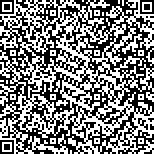| Objective: To investigate the prognostic value of four critical illness scores in patients with sepsis complicated with acute kidney injury (AKI) in the emergency intensive care unit (EICU). Methods: 102 patients with sepsis complicated with AKI admitted to EICU of our hospital were selected as the study objects, and were divided into stage Ⅰ (n=36), stage Ⅱ (n=39), and stage Ⅲ (n=27) according to the AKI staging criteria. According to the 28-day survival after admission, the patients were divided into the survival group (n=60) and the death group (n=42). Acute physiology and chronic health evaluation Ⅱ (APACHEⅡ) score, sequential organ failure assessment (SOFA) score, modified early warning score (MEWS), and emergency sepsis mortality risk score (MEDS) were performed on the day of admission to the EICU. Logistic regression was used to analyze the influencing factors of death in sepsis patients with AK1, and the receiver operating characteristic (ROC) curve was used to analyze the predictive value of each score for death. Results: There were significant differences in APACHEⅡ, SOFA, MEWS and MEDS scores among patients with different AKI stages (P<0.05). The APACHEⅡ, SOFA, MEWS and MEDS scores of the death group were significantly higher than those of the survival group (P<0.05). Logistic regression analysis showed that APACHEⅡ, SOFA, MEWS and MEDS scores were independent risk factors for death in sepsis patients with AKI (P<0.05). ROC curve analysis showed that the area under the curve (AUC) of APACHEⅡ score, SOFA score, MEWS score and MEDS score for predicting death was 0.779、0.810、0.831 and 0.907, and the AUC of MEDS score was significantly higher than that of APACHEⅡ score (Z=2.371, P=0.018). Conclusion: APACHEⅡ, SOFA, MEWS and MEDS scores can predict the prognosis of sepsis patients with AKI, but the MEDS score is significantly better than the APACHEⅡ score. |






